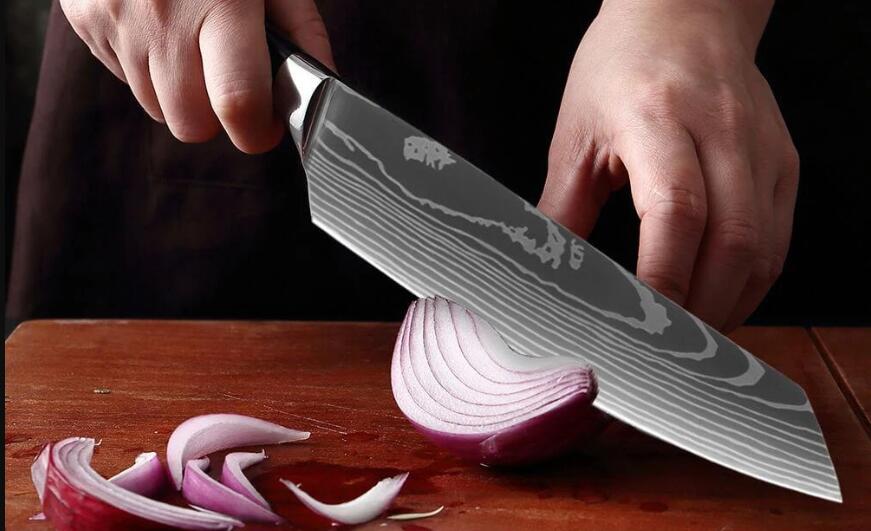As mentioned at documentary < Samurai. Sword>, shoot by National. Geographic, it demonstrated the effect of cutting the dummy with various world-famous knives, except that the Japanese sword split the dummy in half. You can imagine how sharp the Japanese sword is. Japan is a low-resource country. Except for a small amount of iron sand, it was impossible to mine fuel ores that are prone to high temperatures. The harsh natural environment forced the craftsmen to be ingenious. After hundreds of years of research, they finally developed the sharpest knives in the world, the same goes for kitchen knives.

Below, pick up some our favorite Japanese knives:
- Best Overall Japanese Knife: Letcase 8 inch classic Damascus steel chef knife
- Best Value Japanese Knife: 10-piece stainless steel kitchen knives set
- Sturdiest Japanese Knife: Letcase 8-inch butcher knife
- Most Ergonomic Japanese Knife: Letcase Damascus steel kitchen knives set
What’s the Japanese knife?
Japanese knife is also a kind of knife for cooking preparation, Japanese knives have varieties of types, but these knives are often made by traditional Japanese blacksmithing techniques. Japanese knife is kind of Western-style kitchen knife, different from European knives, especially German knife. The main difference is that Japanese knives feature thinner blades, which is made of harder steel and is double-sides beveled.
Why are Japanese knives so sharp?
1. Complex craft process and technology
Japanese knives are academically called flat-fragment complex dark-light patterned blades. They are made of low-temperature and high-carbon steel, go through repeatedly forged, quenched, smelted and ground process. In short, after a series of tedious and detailed process like charcoal hammering and quenching, and Grinding, all of these can ensure the hardness and toughness of the blade. Of course, it also requires meticulous maintenance work.
In the early days, Japanese knives used the steel clamping technique. The popular understanding is that the knife spine, blade, and tip of blade are made of different steel materials, so that they can maintain their own strength while keeping the blade sharp. thus, it is neither easy to bend nor fold. Want longer tool life.
In a conclusion, Japanese knives combine traditional craft and modern technology to improve the ability to manipulate steel. Japanese knife has thinner blade to ensure it’s sharpness, in another hand the harder steel can keep their edge for longer.
2. The unique arc-shaped design of the Japanese knives
In addition to the craftsmanship, the unique arc-shaped design of the Japanese sword is also the secret of its super sharp ability. First of all, the outline of the Japanese knives conforms to the principles of engineering design and physics. Secondly, the blade of the Japanese knives has a sharp bevel, combined with a thick blade, which is very suitable for cutting.
3. Premium Japanese steels
When it comes to knife materials, knifemakers have many choices. Japanese knife can be made from stainless steel, high-carbon steel and Damascus steel like VG10 or SG20.high-quality steel plus outstanding knife making technique will ensure a great knife.
4. High hardness
You may notice that some chefs often hone their kitchen knives before they cut food. that’s because their knives get blunt easily.in order to improve the efficiency, they have to hone it frequently, but Japanese knives require far less sharpening and maintenance than European knives. compared with typical German knife which features hardness of HRC 52 – HRC 56, the hardness of a typical Japanese knife can up to HRC 58 – HRC 65. You know, the harder the steel is, the better quality steel is, and the longer the edge stays sharp.

In a Conclusion
The craftsmanship of Japanese kitchen knives has a long history, with rich knife-making experience and mature craftsmanship. At the same time, Japanese steel is a high-quality steel, which makes Japanese cooking knife sharp, can deal with your daily food preparation work easily, and is not easy to feel tired.
If you are looking for a kitchen knife, Japanese knife will be your good choice.


0 comments